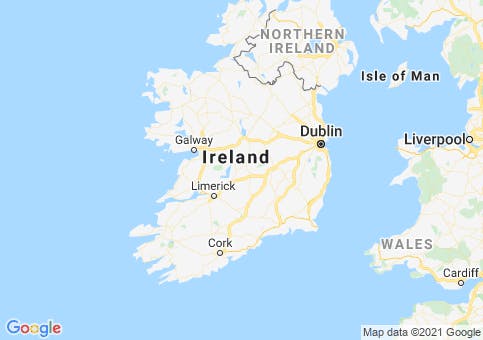Perched on the eastern coast of Ireland, the capital city of Dublin is a modern sanctum of history, art, music, and culture. A city birthed in the fire of Viking conquest, it served as the staging ground for a vivid historical cacophony of imperialist authority, national resistance, bitter civil war, and finally, independence.
The name Dublin originates from Dubhlinn, in the early Gaelic language, which, when translated literally, means “black pool (dubh=black, linn=pool.) The first records referring to this “Dubhlinn” date back to Viking raids sometime in the 8th or 9th century, where a fledgling settlement emerged straddling the river Liffey.
Dublin and Ireland’s history is inextricably linked to that of its neighbor to the east, the United Kingdom. This saga began in 1169 with the Anglo-Norman invasion of Ireland. Following the English’s formal conquest of the island in the 16th century, Dublin emerged as the undoubted administrative center of the island, often called “the Pale.”
By the dawn of the 18th century, Dublin’s population had grown to over 60,000 people, making it the second-largest city within the British Empire. However, British control over the island was to remain tentative, and numerous rebellions and insurrections, most notably in 1916, would culminate in the declaration of an independent Irish free state in 1922, and a full-on independent Republic in 1949.
Today, Dublin is a vibrant, modern capital city, the European headquarters of several major international businesses, a hub for some of the best musical acts in the world, a sporting mecca, and a cultural scene unlike anywhere else.
How to Move Out of the U.S.
How to Move Out of the U.S.
In all sorts of beautiful, welcoming, culturally rich, saner places around the world, you can live well from $2,000 a month (all in, housing included). Sign up for our free daily IL Postcards e-letter and we’ll immediately send you a free report on the WORLD’S # 1 RETIREMENT HAVEN— plus 9 more spots you should have on your radar. Each day, you’ll earn about the best places to move to, retire, travel, buy real estate, and enjoy a good life for less, overseas.

By submitting your email address, you will receive a free subscription to IL Postcards, Overseas Dream Home, The Untourist Daily and special offers from International Living and our affiliates. You can unsubscribe at any time, and we encourage you to read more about our Privacy Policy.
Retire in Dublin
Dublin is a vibrant cultural hub brimming with energy, located on the edge of Europe. The Irish are famous for their friendly, open nature and welcoming attitude. While the standard of living is very high, it comes with a significant cost. However, if you’re financially secure, Dublin could be your ideal retirement destination.
Renting/Buying in Dublin
One of the most talked-about issues in Ireland today revolves around the general cost of property, whether you’re looking to rent or buy. Dublin is by far the most densely populated region on the entire island and the country’s economic workhorse. So, while it does boast the most real estate opportunities, the demand is incredibly high, causing further inflated prices.
Daft.ie, one of the leading property letting companies in Ireland, reported that in 2023, the average rent in Dublin had topped €2300, an uptick of over 13% from the prior year. It’s comparable to the more metropolitan areas in the U.S.
If you’re looking to buy, the situation isn’t any better; huge demand and limited supply have seen housing prices undergo a huge climb over the last decade. Again, according to figures presented by Daft.ie, the average cost of a house in the Dublin area has reached over €420,000, a 1.5% increase from 2022.
Healthcare
The cost of healthcare in Ireland is significantly cheaper than in the U.S., and there’s a public healthcare system (HSE) to be availed of. It’s not exclusive to Irish citizens; if you can prove you’ll be living in Ireland for at least one year, you’re considered “ordinarily resident” and are thereby entitled to subsidized, or even free, healthcare services. General Practitioner visits generally cost €50 per visit, but this can be subsidized with the use of a registered medical card.
However, the Irish public healthcare system has long been plagued by frustratingly long wait times for all manner of non-urgent procedures. Many Irish people instead opt to pay for private healthcare because of this, allowing them to significantly cut down on those wait times and gain access to more specialist options.
Some of the pre-eminent companies offering health insurance in Ireland include Irish Life Health, VHI, and Laya Healthcare. Generally, health insurance with access to semi-private rooms in a private hospital will run you €165 a month. This is an average cost for anyone over 65, but plans and prices will vary depending on your age, pre-existing conditions, and medical history.
Visa and Residency
Like the other countries in Europe’s Schengen Zone, you can visit Ireland for 90 days without any visa; the only thing you need is a valid passport.
Should you like to extend your stay, you’ll need to apply for a long stay “D” visa, along with an IRP (Irish Residency Permit).
To retire in Ireland, you’ll need to prove you won’t become a burden on the state, which means proof of an annual income of at least €50,000. You can find more details on applying for an Irish retirement visa by clicking here.
If you aspire to retire in Ireland, it’s worth digging a little bit through your own family tree. If you have an Irish parent/ grandparent, you’re eligible to apply for Irish citizenship via descent. To learn more about whether you qualify for this program, check out this page.
Traveling to Dublin
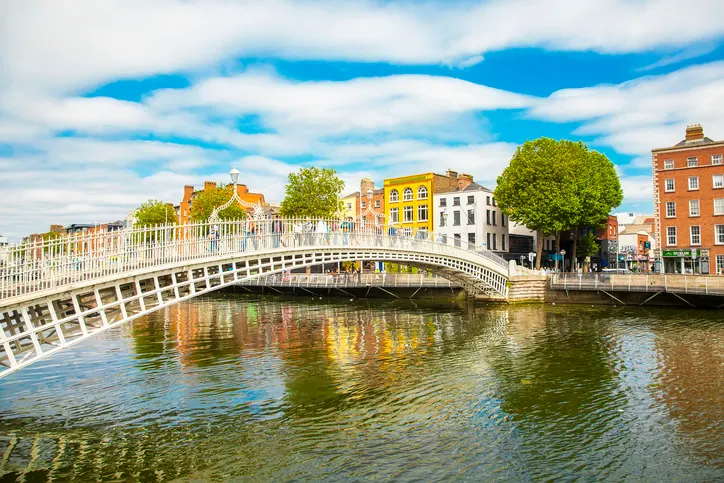
Ireland boasts a well-renowned moniker of “the Emerald Isle,” and it’s undoubtedly true; gorgeous, rolling green meadows and fields sprawl virtually the entire length of the country. However, it’s important to note that this “emerald’ hue is the result of the porous rainfall Ireland receives on an annual basis.
With that in mind, you’d probably have a better experience exploring Dublin in the summer, when there’s nicer weather. You won’t escape the rain entirely, even in summer, but at least you’ll absorb more sunshine. The late spring/ summer months, namely May to August, offer moderate-cool weather, with temperatures generally hovering around 65 F.
While snow is relatively rare in Ireland, the winters can still be frigid, with strong winds and rain. The east coast, where Dublin is, is significantly more sheltered than its counterpart in the west, which is often battered by strong gales rolling in across the Atlantic. However, you can still expect heavy rainfall and temperatures dropping to lows of usually 35 to 39 F.
It's difficult to estimate the cost of flights to Dublin from the U.S. As expected, flying from the east coast is significantly cheaper, and if you do your research, a round trip can be found for as little as $300, flying from places such as Washington D.C. and Boston.
Once you’re in the city, there’s an array of different transport options to make use of. It’s worth noting that while public transport operates seven days a week, services are noticeably reduced over the weekend.
The LUAS is a hop-on, hop-off tram service that’s generally reliable and affordable and is probably the quickest way to navigate the city center. Dublin bus offers a wider range of routes than the LUAS, but I urge patience, as it’s not at all uncommon for buses to be delayed. The Dublin Area Rapid Transport (DART) train service is more reliable and serves the Dublin inner city as well as out further to suburban areas.
If you plan on using these services, it’s probably worth picking up a LEAP card, which allows you to top up with credit and use across the Dublin Bus, LUAS, and DART network. You can pick up LEAP Cards in most corner shops/newsagents.
Lifestyle in Dublin
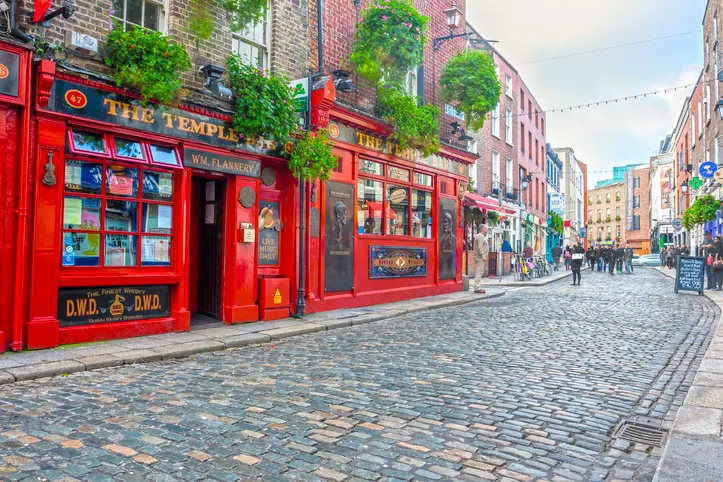
Dublin is an incredibly vibrant city; because of its small size, it seems like it’s constantly in a frenzy of activity. You’ll often hear locals talking about how there’s a certain “buzz” to the capital.
If you’re stuck for something to do in Dublin, you’re simply not looking hard enough. With its varied selection of restaurants, bars, live music, plays, sporting events, and other great activities, there’s something taking place virtually every night of the week.
Restaurants and Pubs:
Dublin is brimming with high-quality restaurants, offering a wide range of worldly cuisines and tastes to fit any desire. From Japanese, Thai, and Vietnamese to stylish tapas bars and steakhouses boasting local Angus Irish beef, you won’t be left wanting for some delicious grub.
Here are some of my top recommendations for a bite:
Fire: If you’re a fan of fine dining, make sure to check out this gem, which sits adjacent to the Irish parliamentary building, Leinster House, a favorite haunt of Dublin’s Lord Mayor.
The Blind Pig is a cocktail bar/ restaurant with a U.S. Prohibition-era speakeasy theme. It offers delicious food and better drinks in a stylish, chic atmosphere.
Clontarf Castle: If you want to escape the inner city and explore some of Dublin’s beautiful seaside suburbs such as Malahide, Clontarf, and Howth, make sure to hit up Clontarf Castle for some traditional Irish dinners, as well as great ambience.
And, of course, it would be remiss to discuss Dublin without bringing up its plethora of incredible pubs. As a visitor, you may hear a lot of talk about Temple Bar, a small part of the inner city that draws a huge crowd due to its charming cobble-stoned streets and selection of traditional pubs. I’d recommend you steer clear, however, as it quickly gets swamped with tourists, and the price of your Guinness will certainly reflect this. If there’s any sort of event going on, this part of Dublin becomes overrun with crowds.
Here are a couple of alternatives that will let you embrace that authentic Dublin vibe while skipping out on the tourist traps.
Doyles, just outside of Trinity College Dublin, is a cozy, intimate setting right in the heart of the city.
Whelans, constantly featuring a wide range of fantastic live musical acts.
The Long Hall, one of Dublin’s oldest pubs, with a classic Victorian interior unchanged since 1881.
Sports
The Irish are proud creators of Gaelic sports (GAA); most notably Gaelic football, and the fastest field sport on the entire planet; hurling. Dublin boasts the home of GAA, the illustrious Croke Park. It’s well worth getting out to see a match, which are contested between the various counties, and are often fueled by decades of bitter rivalries.
Soccer and rugby have also become huge draws, with the Irish rugby team being ranked as the number one team in the world as of 2023. Rugby and soccer matches at the club level take place on a weekly basis in Dublin, but the international games are by far the best experience, offering a great level of talent and an incredible atmosphere.
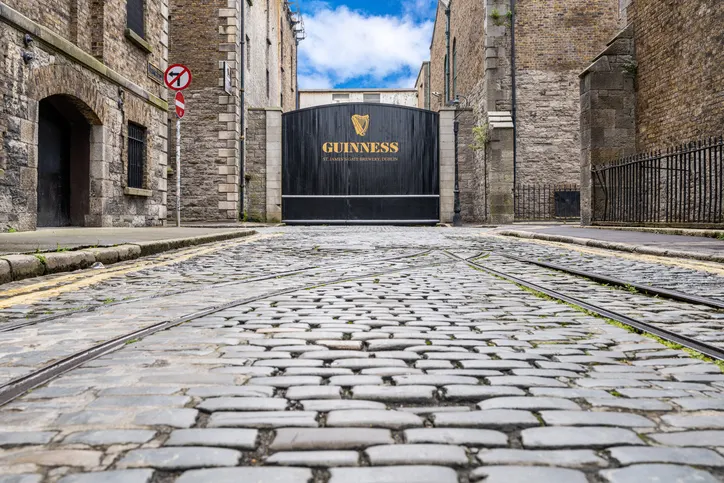
Here are some recommendations for more general things to check out in Dublin, from museums and historical sites to sightseeing tours and scenic retreats:
The Guinness Storehouse: Enjoy a tour of the Guinness factory, learn how they brew arguably Ireland’s most famous export, and enjoy a delicious pint at the very end.
The Book of Kells Exhibition, Trinity College Dublin: Visit Dublin’s oldest university, Trinity College, established in 1592. Check out the Book of Kells, a relic dating back to 384 AD. Also, check out the gorgeous Old Library.
Kilmainham Gaol: A pivotal part of Dublin’s history and now a museum, the leaders of the famous 1916 rebellion were held in this jail while awaiting execution.
Day trip to Glendalough: Technically, this is outside Dublin, located in the neighboring county of Wicklow, but its serene aura and picturesque mountain scenery are too enticing to ignore.
The National Museum of Ireland: Immerse yourself in the rich history of the Irish land and people by visiting the National Museum, home to incredible exhibits and galleries such as natural history, decorative arts, and even archeology.
How to Move Out of the U.S.
How to Move Out of the U.S.
In all sorts of beautiful, welcoming, culturally rich, saner places around the world, you can live well from $2,000 a month (all in, housing included). Sign up for our free daily IL Postcards e-letter and we’ll immediately send you a free report on the WORLD’S # 1 RETIREMENT HAVEN— plus 9 more spots you should have on your radar. Each day, you’ll earn about the best places to move to, retire, travel, buy real estate, and enjoy a good life for less, overseas.

By submitting your email address, you will receive a free subscription to IL Postcards, Overseas Dream Home, The Untourist Daily and special offers from International Living and our affiliates. You can unsubscribe at any time, and we encourage you to read more about our Privacy Policy.
Safety in Dublin
Dublin has strict laws restricting the ownership of firearms, so gun violence is rare. While Dublin is a relatively safe place, it’s worth exerting the same level of caution and common sense you would maintain in any capital city, especially at night. Be aware of your surroundings, watch out for pickpockets, and try not to wander aimlessly, particularly at night.
Cost of Living in Dublin
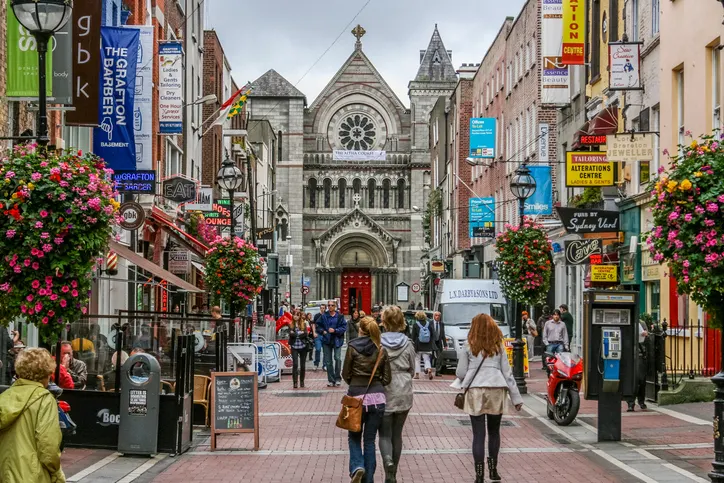
The major aspect of life in Dublin that will be noticeably cheaper than its counterparts in the U.S, is healthcare. Unfortunately, the cost of rent, property, groceries, and entertainment will generally be on par with the more metropolitan areas of the U.S.
Keep in mind, certain things like electricity, gas, and even wifi/phone plans, can vary in price dramatically, and it’s worth shopping around every year to find the best policy you can get from competing suppliers.
Here’s an example of a monthly sample budget for two people living comfortably in Dublin:
| Expense | Euro |
| Rent (Two-Bed Apartment) | €2200 |
| Electricity | €100 |
| Water | €0 (Free in Ireland) |
| Gas | €140 |
| Internet | €30-40 |
| Cellphone | €20 (Unlimited Data) |
| Cable/Pay TV | €15-45 |
| Healthcare | €165 (per person) |
| Transportation | €80 |
| Groceries | €450 |
| Entertainment | €200 |
| Monthly Total | €3525 |
Conclusion
At International Living, our goal is to give you the best possible advice to inform you how to forge the best possible life for yourself overseas. With that promise in mind, it’s difficult to fully advocate Dublin as an ideal retirement destination, at least at the moment. The current state of the economy, and more significantly, the housing market in Dublin, make the Irish capital a particularly expensive place to live.
However, that doesn’t mean it isn’t worth a visit. An incredibly vibrant blend of history, culture, friendly people, and a high standard of living make Dublin a great vacation destination. Come and enjoy a game of Gaelic football, expertly poured pints of Guinness, and some of the most genial people on the planet in Ireland’s capital. If you visit Dublin, I guarantee you’ll return home with some seriously incredible stories and memories to regale your friends and family.
How to Move Out of the U.S.
How to Move Out of the U.S.
In all sorts of beautiful, welcoming, culturally rich, saner places around the world, you can live well from $2,000 a month (all in, housing included). Sign up for our free daily IL Postcards e-letter and we’ll immediately send you a free report on the WORLD’S # 1 RETIREMENT HAVEN— plus 9 more spots you should have on your radar. Each day, you’ll earn about the best places to move to, retire, travel, buy real estate, and enjoy a good life for less, overseas.

By submitting your email address, you will receive a free subscription to IL Postcards, Overseas Dream Home, The Untourist Daily and special offers from International Living and our affiliates. You can unsubscribe at any time, and we encourage you to read more about our Privacy Policy.












